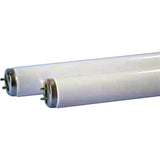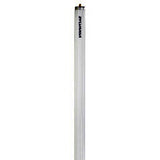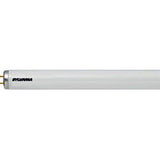The Promise of LED Color Shifting Bulbs for Health
Posted by Nick on for ProLampSales

You'd think, after 4.6 billion years of existence, the sun would get some respect. But the importance of the sun's light has long been ignored as a key factor for human health and well being.
Maybe, because incandescent bulbs were cheap and effective for much of the twentieth century, mimicking the light from the sun wasn't a priority. With incandescent bulbs disappearing in favor of the much more versatile LEDs, however, light health is growing in popularity.
Almost all incandescent bulbs have a color temperature of 2700K, while halogens are 3000K. Fluorescent bulbs, either tubes or CFLs, because of the phosphors used in the lamps, can have a much wider range of color temperatures, from 2700K to 6500K and everywhere in between.
LED, a solid state lighting source, offers new color control capabilities, with some LED bulbs and LED strips having precise color control mechanisms if the LED source is RGB. Many LED strip lights now on the market come with an RGB remote control, so you can create the orange light of sunrise, to the blue-white light of noon, to the reddish hues of sunset -- all without switching out bulbs or doing anything other than pointing a remote at the lights.
Why is this precise control of color important to health? It all has to do with circadian rhythms, the rhythms that control mental and behavioral changes in humans depending on the time of day. The changing color temperature of light from the sun that occurs throughout the normal day-night cycle greatly influences the circadian rhythms.
This is why working in a windowless office or on the night shift is so destructive to one's mental well being. And with LED lights taking up more space on store shelves, research is being done on how the greater control of lighting can mimic the natural light of the sun and mitigate the risks of poor lighting or a lack of natural spectrum lighting, all while saving money on energy costs.
So what does this mean for the future of lighting? Manufacturers and lighting research centers such as Rensselaer Polytechnic Institute have done studies on the use of LED lights to help doctors keep aware and awake during surgery, Alzheimer's patients to stay awake in the late afternoon so they sleep better at night, as well as for recovering patients in hospital rooms. Blue wavelength light suppresses melatonin in the morning to encourage the patient to wake up, while red wavelengths at night during nursing visits provide enough light for nurse checkups without awakening the patient. All of this wavelength manipulation can be done with RGB LEDs in single fixtures.
Certain industries like healthcare and schools, as well as workplaces will be the first to utilize color temperature shifting LEDs in the design and application of lighting, but we can also expect the technology to filter down to consumers in the coming years. LED bulbs offer new ways to feel better and fight the blues, whether it's from a lack of lighting in the workplace, working nights, or seasonal affective disorder.
Featured Products (View All)
0 Comments



